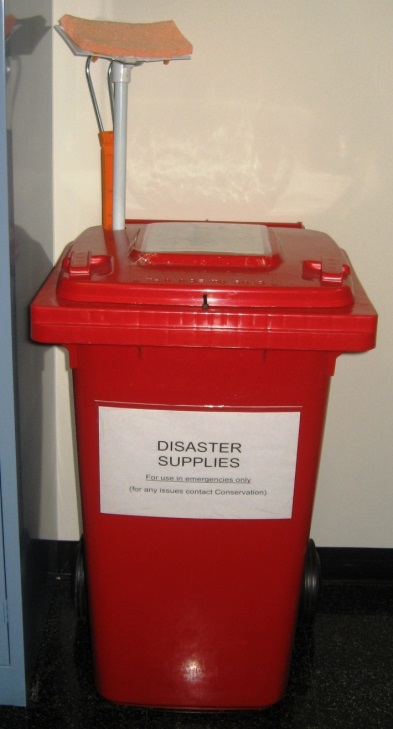Cyclone Preparation
With the first low developing it is a good time to enact your cyclone preparedness plans.

Usually this should involve:
- checking that all volunteers and local council staff are aware and have read the cyclone preparedness plan, and understand what need to be done if a cyclone watch is declared;
- checking your disaster response bin and ensuring that it is up to date with the list enclosed in the bin (see below for list);
- ensuring a recent backup of all computer files has been carried out, or check that routine automatic backup systems are working and up to date;
- ensuring the museum curator and office holders have updated personal contact details for each other stored in their personal mobile phones;
- checking the list of phone contacts for volunteers, local council contacts and emergency services;
- checking local council cyclone plans;
- checking that any procedures dealing with post disaster event are located in a safe place and that volunteers and staff are aware of these;
- locating all keys to display cabinets, testing that all locks work and access is available to remove objects. Storing the keys in the key safe and ensuring volunteers and staff know how to access;
- ensuring collection items and display images have been updated and that volunteers and staff are aware;
- ensuring any loaned objects are assessed and that they are returned if practical. Contacting lenders and make them aware that cyclone season is approaching;
- cleaning all gutters, down pipes and removing overhead branches
Your disaster bin should be located in an area that is readily accessible and should have a list, kept with the bin, stating what the contents are. It is important to replace things like batteries and review its contents on a regular basis.
THIS DISASTER BIN SHOULD CONTAIN:
- 1 torch
- 1 head torch
- 1 spare battery
- 10 metres plastic sheeting
- 2 rolls waterproof tape
- 1 pair scissors
- 1 stanley knife
- 4 packets paper towelling
- 40 Chucks wipes
- 1 sponge mop
- 1 spare mop sponge
- 1 hand sponge
- 1 plastic bucket
- 1 brush & pan
- 8 garbage bags
- 2 boxes nitrile gloves
- 1 large & 1 medium rubber gloves
- 2 dust masks
- 2 waterproof pens
- 30 tyvek labels & ties
- 1 roll cotton tape
- 1 notebook
- 2 pens
- 30 ziplock bags

Example of disaster supply bin – cable tie shut and cut when needed. This will mean that supplies aren’t used for general cleaning purposes
For more information about cyclone and disasters preparation, visit some of the Museum Development Officer previous blog posts or contact us.
Posted on 5 December 2023, in Uncategorized and tagged disaster, disaster preparedness. Bookmark the permalink. Leave a comment.

Leave a comment
Comments 0